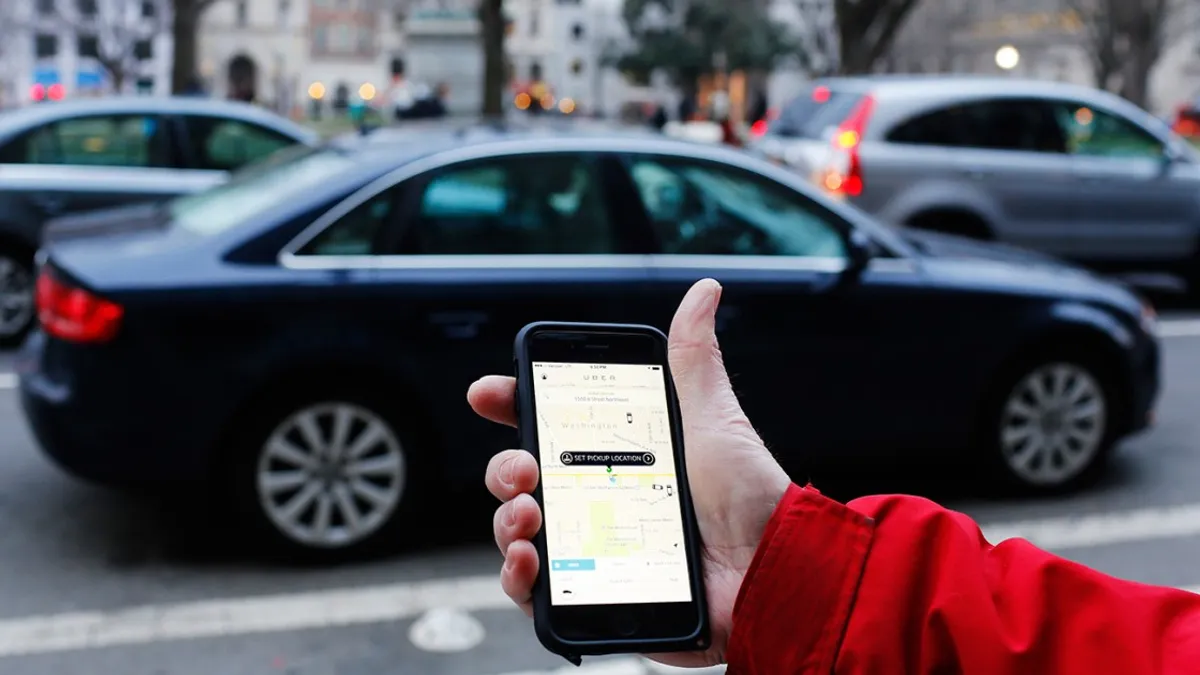Dive Brief:
- Uber has applied for a patent for a technology called "safe routing for navigation systems" that would let users customize their route based on safety conditions. Users would have the ability to weigh safety more than total trip time if they so choose, and the technology would offer alternative pick-up and drop-off points or driving routes.
- The technology would analyze data on factors including time of day, traffic, crime, weather, pick-up location and drop-off location, as well as historical trip data in multiple databases. It would also gather information from news, government and social media websites and databases to identify factors that could affect a trip, such as a sporting event. The application says the route determination method would "improve the safety of the trip without negatively affecting service for any particular area."
- The patent application also indicates that the driver's vehicle make, model and year play a role in safety, because "some vehicles are more reliable, have better performance, are more structurally secure, have advanced safety features, and/or are less likely targets of theft."
Dive Insight:
This patent has the potential to create some controversy if granted, and Uber has had its share of other controversial events, including patent applications. Previously the company applied to patent an artificial intelligence (AI) system that would track app users' "erratic behavior," which many people read between the lines to translate as checking whether users are drunk.
Drunk passengers increase the likelihood of damaging drivers' vehicles and may become violent. However, giving drivers the ability to refuse trips due to an app's perception that passengers might be drunk, without even encountering them in person, could eliminate a relatively safe, affordable mobility option for people incapable of driving themselves.
The navigation patent application might go a step or two further with its potential to rile the masses. The exact metrics Uber would use to determine route safety are unclear, but the concept appears to be a tool capable of avoiding certain neighborhoods at the tap of a screen. Yet Uber contends that its method would maintain "service neutrality." Microsoft released a similar safety system several years ago, but it was reportedly dubbed the "avoid ghetto app" because it typically routed users around low-income neighborhoods.
Another aspect of this technology that invites controversy is the focus on a driver's type of car. While some cars do have better safety ratings than others, the technology may penalize drivers who do not own new, high-end vehicles.
On the other hand, the service genuinely could improve user safety, placing more control into the customer's hands instead of leaving the entire trip up to the driver and GPS. This technology's greater data aggregation could offer both passengers and drivers more alternative routes to avoid known trouble areas or to get around problems they encounter along the way.
The patent application describes how the technology also would examine street conditions — not just crime stats — to choose routes. For example, the system would gather data that shows if many drivers on the same street swerved to avoid a road hazard, and it would use the information to reroute future drivers to a different, safer street.
A point to remember is that if this patent is granted and Uber does incorporate the navigation technology into its platform as described, its use is not mandatory and customers would have the choice of whether to prioritize safety using this system.












